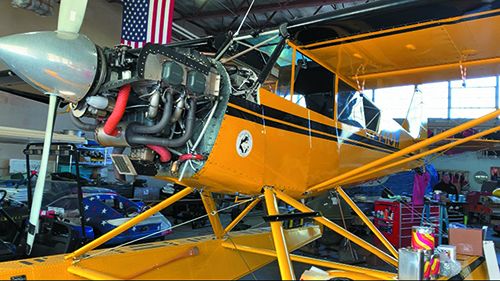If you’ve ever retrieved an aircraft from a maintenance shop you probably sat up a little straighter in the seat on that first takeoff run. If you haven’t, your mind is not in the right place.
Maintenance can—as the NTSB reports consistently prove—introduce another layer of risk that goes with the territory of wrenching an aircraft. Whether it’s infant mortality of replaced components or improper installation and reassembly, face the fact that the chances of a mechanical problem might be considerably higher after a maintenance event.
There are some things you can do to help minimize the risk, and it starts long before you fetch the aircraft from the shop. The agency’s FAA Safety Team (FAAST), with guidance from the NTSB and the General Aviation Joint Steering Committee (GAJSC), have issued a fact sheet pertaining to the subject of advanced preflight practices following aircraft maintenance that I think every pilot should read. A lot of it is common sense items, but I bet the majority of pilots don’t give the topic the thought it deserves.
The fact sheet reminds us that it’s the PIC who is responsible for determining whether the aircraft is in a condition for safe flight per 14 CFR 91.7, and that also includes making sure the paperwork trail (14 CFR 91.405) is in place that says the aircraft has been approved for return to service. This is an important signoff that often gets dropped out of haste. Or maybe the customer retrieves the aircraft when the shop is closed, and the maintenance release never got issued. I once dealt with an off-field landing after maintenance and the first thing the FAA wanted to see was the maintenance release.
COMMUNICATE, AVIATE
These days it’s easier than ever to communicate with the people who work on your aircraft. Ask the shop for simple progress reports as it completes major tasks on the aircraft. This way you’ll already be anticipating the first flight after maintenance, with a solid plan ready should something go wrong. It pays to periodically visit the shop while the aircraft is torn open so you have a firsthand glimpse of what the shop is doing. That’s also a good time to have a sit-down with the people working on the aircraft so you can learn, in detail, about issues that were found during inspection or repair and alteration. This also includes avionics retrofits and even interior work.
Before the first flight after maintenance ask the shop what to look for when you get the airplane on the runway. And before you even climb in, backstop the tech who signed it off by making sure all inspection plates are on and secure and check for correct and unimpeded flight control surface deflections. Look carefully into the engine bay. Do you see any oil leakage? Smell raw fuel in the cabin? I climbed in a Baron once after an avionics job and smelled fuel, yet made the mistake of launching only to find fuel leaking from a loose fitting on the fuel flow gauge.
If the interior was removed (at least the front seats are almost always removed after major work), put your eyes and fingers on the seat stops. These keep the seat from sliding back on the rails uncommanded and sloppy shops and preflighters sometimes miss them. Check the pitot and static ports for remaining tape (especially after a pitot/static inspection). If you rent, conduct this level of preflight all the time and look closely at the squawk sheet.
Last, take care of billing matters before showing up to retrieve the aircraft. This part of the job is a huge distraction, especially if there’s conflict over what was billed, and carries over to the cockpit where you need to be focused.
There’s more in the fact sheet found at https://tinyurl.com/rm3qtte. It’s worth reading, saving and fine-tuning to suit your operations.


